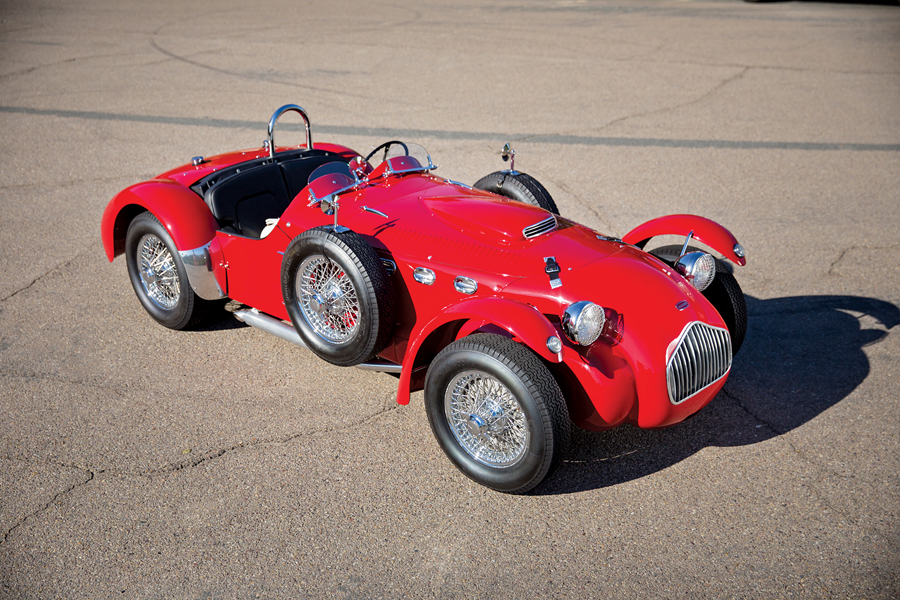Chassis Number: 3062
Exciting and engaging to drive, with features meant for performance over style, the Allard J2X successfully straddles the worlds of hot rods and sports cars. Truly a roadster intended for spirited driving, whether on the track or the street, the fun is in mastering its handling and its growling beast of an engine.
With the 1949 introduction of the J2 — a car designed to be successful in competition and to break into the all-important American market — Allard became a formidable force in European road racing. To improve the rather crude handling characteristics, the J2X was designed with the same wheelbase but with a longer tubular X-frame. The front suspension was upgraded, and the engine mounts were moved forward to improve steering and handling and to lengthen the footwells for better drivability and comfort.
This example, chassis 3062, is one of only 83 J2Xs produced between 1951 and 1953. Completed in June 1952, 3062 was shipped to New York, where it was originally fitted with a Chrysler Hemi engine. While details of its earliest history are not known, in 1969 Alan Beal of Southern California purchased the car, and it remained in his care for more than 40 years.
In 2010, following decades of storage, the car underwent a complete restoration by Steve Dennish of Limeworks Speed Shop. The J2X was fitted with a rebuilt, period-correct Cadillac 331 V8, and subtle modifications were incorporated to enhance performance — but great care was taken to maintain a largely stock appearance. The engine was rebuilt with forged pistons, custom-ground camshafts and six rare Stromberg 97 carburetors feeding into a common-runner manifold. In addition, a set of Alfin drum brakes was installed.
Finished in Ferrari Red by Cole Automotive, with a black leather interior in the original pattern, set off by dual Brooklands screens and engine-turned dashboard, the car is visually as impressive as its performance is astonishing. A photo book chronicling the nearly two-year restoration project is included with the sale.
Soon after the restoration was complete, the consignor, a respected Southern California collector and enthusiast, acquired the gleaming red Allard. In his care, the Allard has continued to be refined both cosmetically and mechanically.
This J2X receives regular exercise and it is described as being in an ideal state of tune and extremely satisfying to drive. In fact, J2 and J2X owners tend to agree that no other car in their collections can equal the pure exhilaration that they get from their Allards on a long, spirited jaunt.

